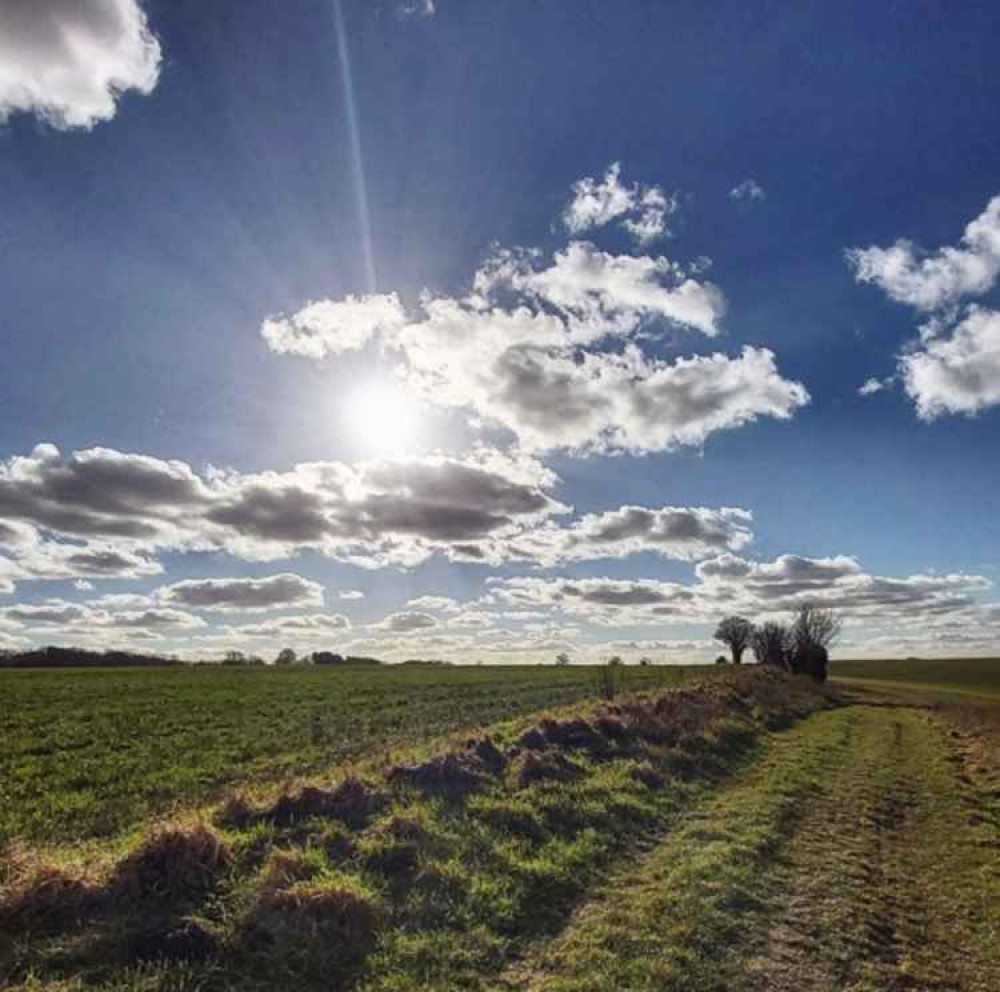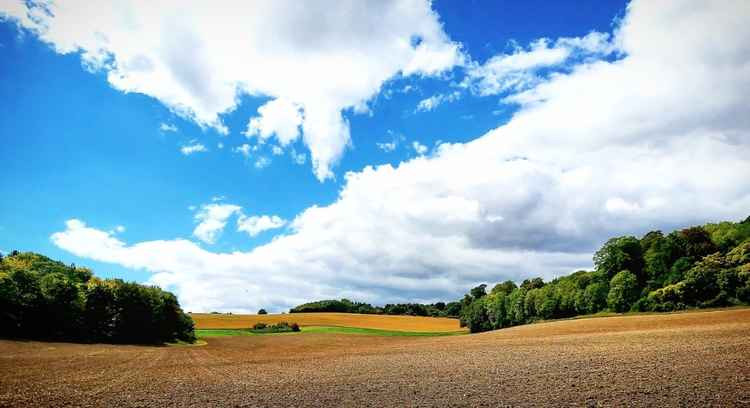Sparky's Hitchin View: Go East to Big Sky Country
By Layth Yousif
28th Feb 2021 | Opinion

Read the latest from our popular Nub News columnist with Sparky's Hitchin View.
A couple of weeks ago we took the opportunity to explore and sing the praises of those majestic neighbours of ours, the Chilterns.
And it would appear that there is now something of a theme emerging as we once again run to the hills. But this time in a completely different direction…
We are going to head to a much more open landscape with sweeping views and big, big skies.
Only a handful of miles from Hitchin are exposed plateaus topped with endless open fields that are scoured by icy winds in winter and then shimmer under the relentless sun of scorching summers.
Fine isolated villages are linked by arrow-straight roads and rutted bridleways, the spires of their medieval churches acting as both landmark and magnet to the traveller: 'perhaps there will be an open pub as well as a church', they hope, as they tramp the path toward the target (or is that just me?)
So, where is this fascinating upland arcadia, this embodiment of Olde England?
Well, these are the rather grandly entitled East Anglian Heights ('The Heights') and they officially start on our doorstep- in Letchworth. And from there they head north west all the way to Newmarket, right into the very heart of low-lying East Anglia.
In a region not over-endowed with high ground, this 10 mile wide band of gentle hills do rather stand out, reaching their highest point of 140 metres (460 feet) at Heydon Hill near Chishill, south east of Royston.
The range's alternative name- The East Anglian Chalklands- gives us a clue as to their geological heritage and highlights the fact that they are, for all intents and purposes, merely an extension of the more glamorous Chilterns Area of Outstanding Natural Beauty, that starts just over the other side of the Hitchin-Stevenage Gap.
However, just like the Chilterns, the underlying chalk rock is not homogenous, as several different types can be found under foot.
One is Totternhoe Stone, which has been quarried for centuries and can be seen in the fabric of many of the churches in this region, as well as in the tower of our own St Marys church, here in Hitchin.
There is also Melbourne Rock- named after the village near Royston- as well as the fabulously named 'clunch', which is widely used as a building material across all of the chalk areas of England but is especially common in these hills.
As we see around Hitchin, alternating bands of soft and hard chalk will always result in springs, and so it is here in The Heights.
'The Springs' in Ashwell High Street are a great example. These are the source of the River Rhee- which together with the Granta- are the principal feeders of the River Cam which will eventually pass through Cambridge. The Cam will then join our old friend, the Great Ouse, at lovely Ely, and will then continue to the Wash, some 65 miles away.
The Rhee springs are a corker, and- according to the rather excellent information panel- will issue over 1 million gallons of water per day in late winter.
The small park in which they sit is easily accessible from the High Street and the whole area is well-maintained and fascinating.
They also enjoy the protection of being a Site of Special Scientific Interest (SSSI), so hats off to the people of Ashwell for maintaining the area so well. There is also a lovely pub nearby, too, which will hopefully be open again soon.
The hills and high ground around Ashwell are a personal favourite of mine, both for cycling and walking.
There are open gardens to visit; an historic ancient monument at Arbury Banks; a fine memorial at the site of the old WWII airfield at nearby Steeple Morden and spectacular views in nearly every direction. Come the spring I will be back.
At the opposite end of The Heights you have the Newmarket Ridge, also with its steep-sided and flat-topped hills.
These, and the lush meadows and the wide open spaces with their gallops, make it the natural choice to be the centre of the UK's horseracing industry: you can combine a day at the races with a visit to the dedicated museum.
Meanwhile, south east of Cambridge we have the wonderfully named Gog Magog Hills- simply known as 'The Gogs' to the locals. Although modest in height- the highest point at Telegraph Clump comes in at only 75 metres (246 feet)- the novelty of this relatively high ground is reflected in their enduring popularity with the nearby city's escapees.
And nearer to home we are lucky to have Therfield Heath, just off the A505 at Royston.
This heathland landscape encapsulates all that is wonderful about the East Anglian Heights. Here, the shapely hills- also with fine views- are a haven for a variety of typical chalk upland wildlife.
You are likely to see soaring raptors, hear the tinkling song of the skylark and in the meadows of late spring you may catch a glimpse of that wonderful and endangered chalk grassland specialist, the Pasqueflower.
The Hertfordshire Way- a 195 mile circular route that explores our wonderful county- heads off north east into these hills as it leaves the Hitchin area.
Although I have yet to walk all of it, I can highly recommend the section from Clothall, near Baldock, over the hills to the village of Wallington. This is another excellent introduction to the true delights of some of these less-frequented hills.
About twenty years ago I was cycling along a bridleway that crossed a large, ploughed field just off the Hertfordshire Way near Clothall. It was a freezing, windy day in the depths of winter and certainly felt like no place to be by choice.
At that point a lone skylark rose from the frozen ground and started singing as it climbed into the grey sky and this incongruous sight, together with the beautiful song, lifted my heart. Up until then I had no idea that they chose, like me, to be out there in the cold.
Back in the present, we may now have other causes for some winter optimism: how right Gertrude Jekyll proved to be when she said: "There is always in February one day, at least, when one smells the yet distant, but surely coming, summer." I now apologise wholeheartedly for my original cynicism when I quoted her in an earlier Sparky's View; sorry, Gertie.
And it would appear that some of our freedoms to roam further afield are now also slowly being restored, too, and may I respectfully suggest the East Anglian Heights for a future expedition.
And of course- throughout all of this- the skylark has continued to sing.
New hitchin Jobs Section Launched!!
Vacancies updated hourly!!
Click here: hitchin jobs
Share:





